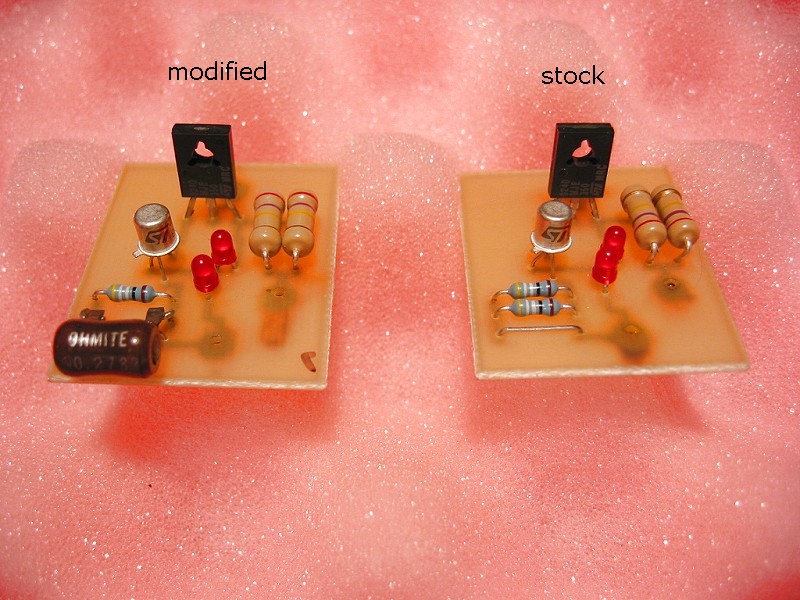| Wardsweb's Bottlehead Paramour Mods |
| --Index-- Next -->> |
Explanation by Paul Joppa for adjusting
the voltage on terminal B6 w/C4S, as found on the Bottlehead Forum:
The current is inversely proportional to the resistance of the two current
set resistors in parallel; the C4S acts to produce the right voltage drop
across them. That voltage drop should equal the LED voltage (about 1.7 volts)
minus the base-emitter voltage of the small transistor (about 0.7 volts).
The net difference is about a volt, but depends on the actual LED voltage
and the actual transistor voltage.
Say you have 249.5 ohms initially. The current, as measured across the driver cathode resistor, is (2.4 volts/499 ohms) or 4.81mA. So the C4S net reference voltage must be (4.81mA times 249.5ohms) or 1.20 volts. To get 4mA, the design target current, you need (1.20 volts / 0.004A) or 300 ohms. That would be 499 ohms in parallel with 750 ohms. Picking standard resistors, 680 and 820 are the closest and will give 4.17mA and 3.87mA respectively. Cathode voltages would be 2.08 and 1.93 volts respectively. Both of those are within 5% of the target, and quite close enough.
Once the current is set at 4mA, then the voltage at the top of the C4S should increase, more closely approximating the target 300 volts.
For calculating the values Paul is talking
about use "OHMS LAW"
V=IR where V is voltage, I is current and R is resistance
with some simple algebra you get I=V/R and R=V/I
To determine the total resistance for
two resistors in parallel use this formula called the "PRODUCT OVER THE
SUM"
RT = R(1) * R(2) / R(1) + R(2)
Here is a good pic of the resistor change, where one of the two parallel
499 ohm resistors was replaced with a 820 Ohmite.
This was to correct the voltage seen on terminal B6. The reason for the big
Ohmite is, it is what I had in 820 ohms.

| --Index-- Next -->> |